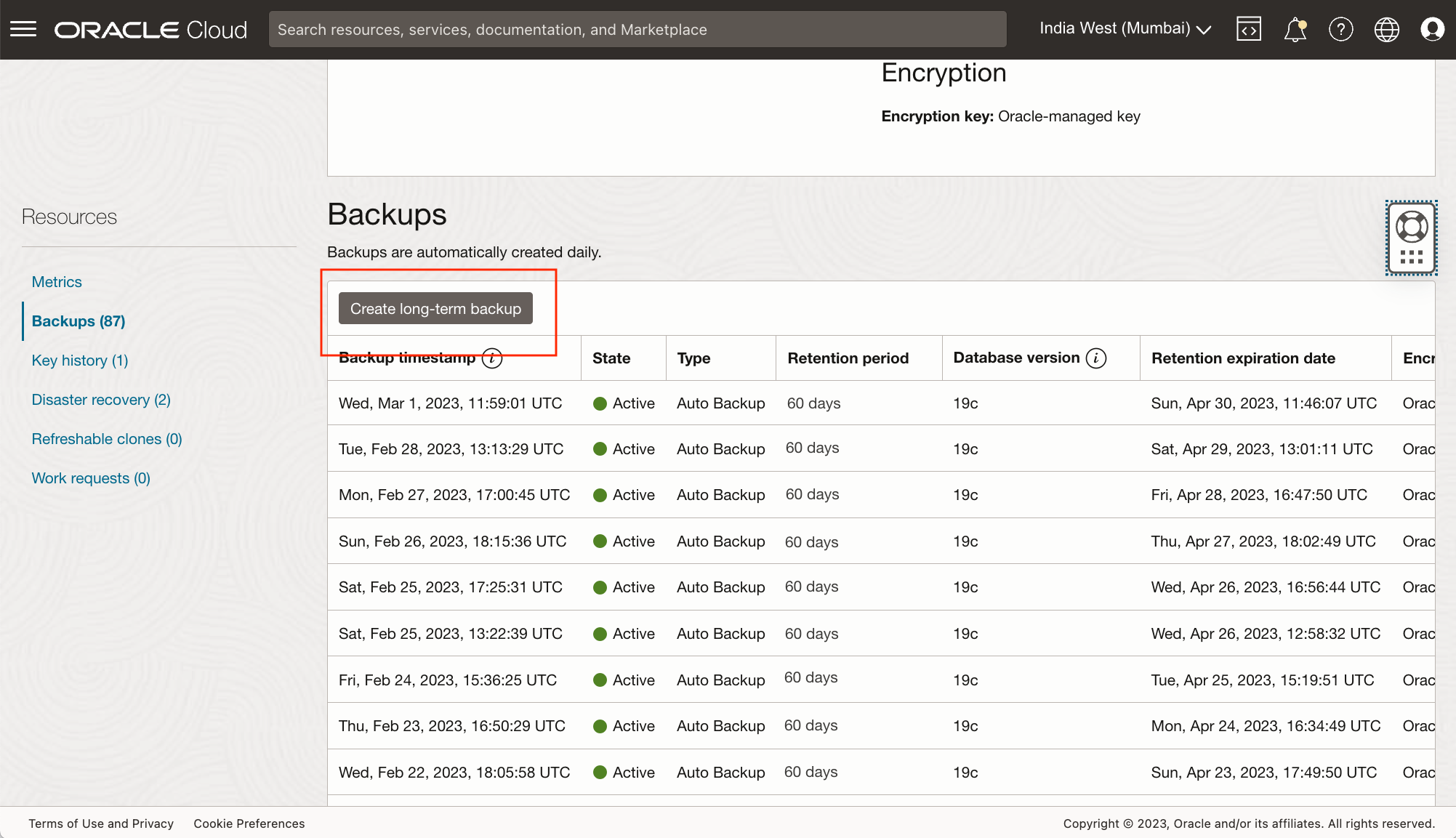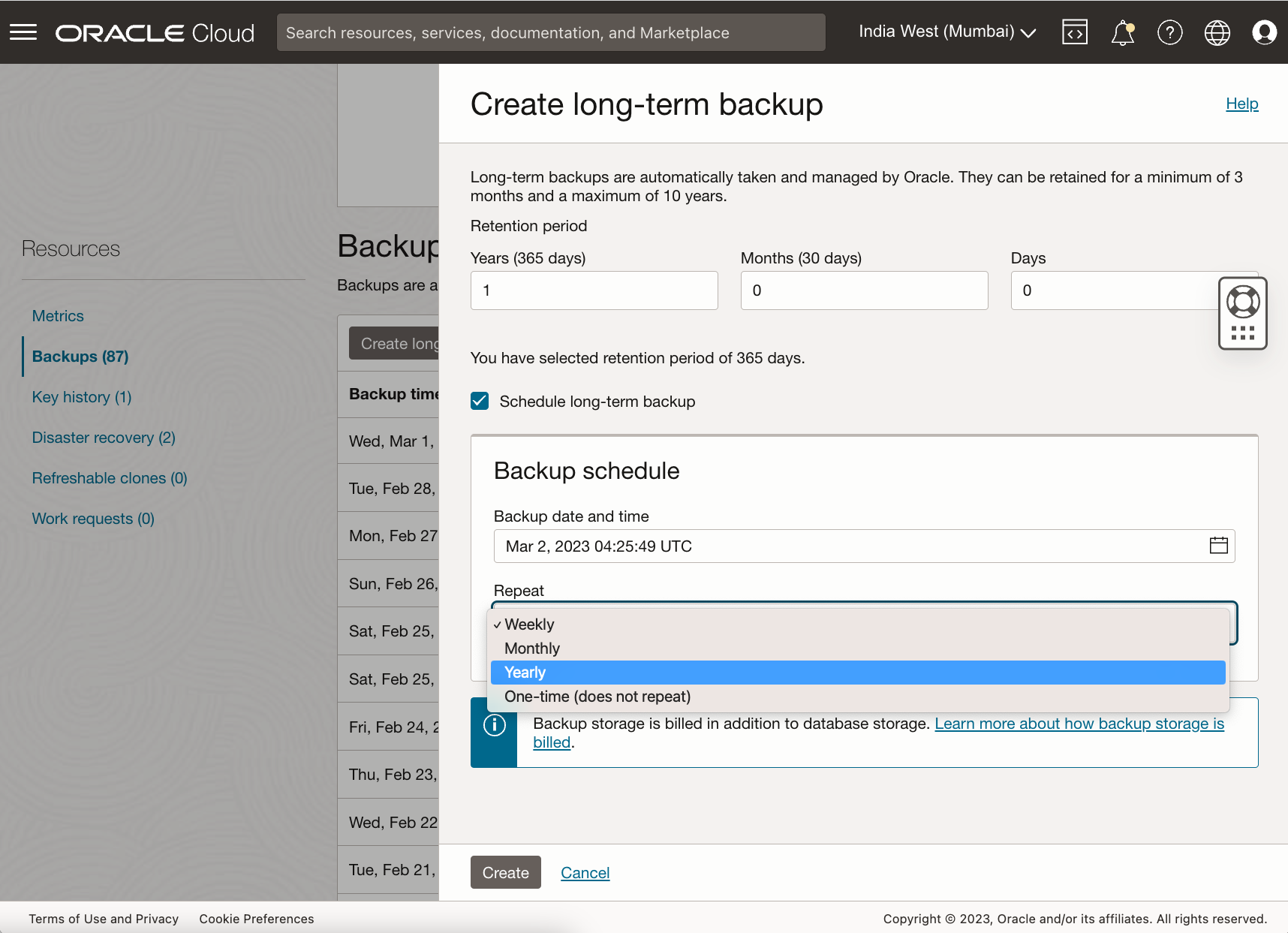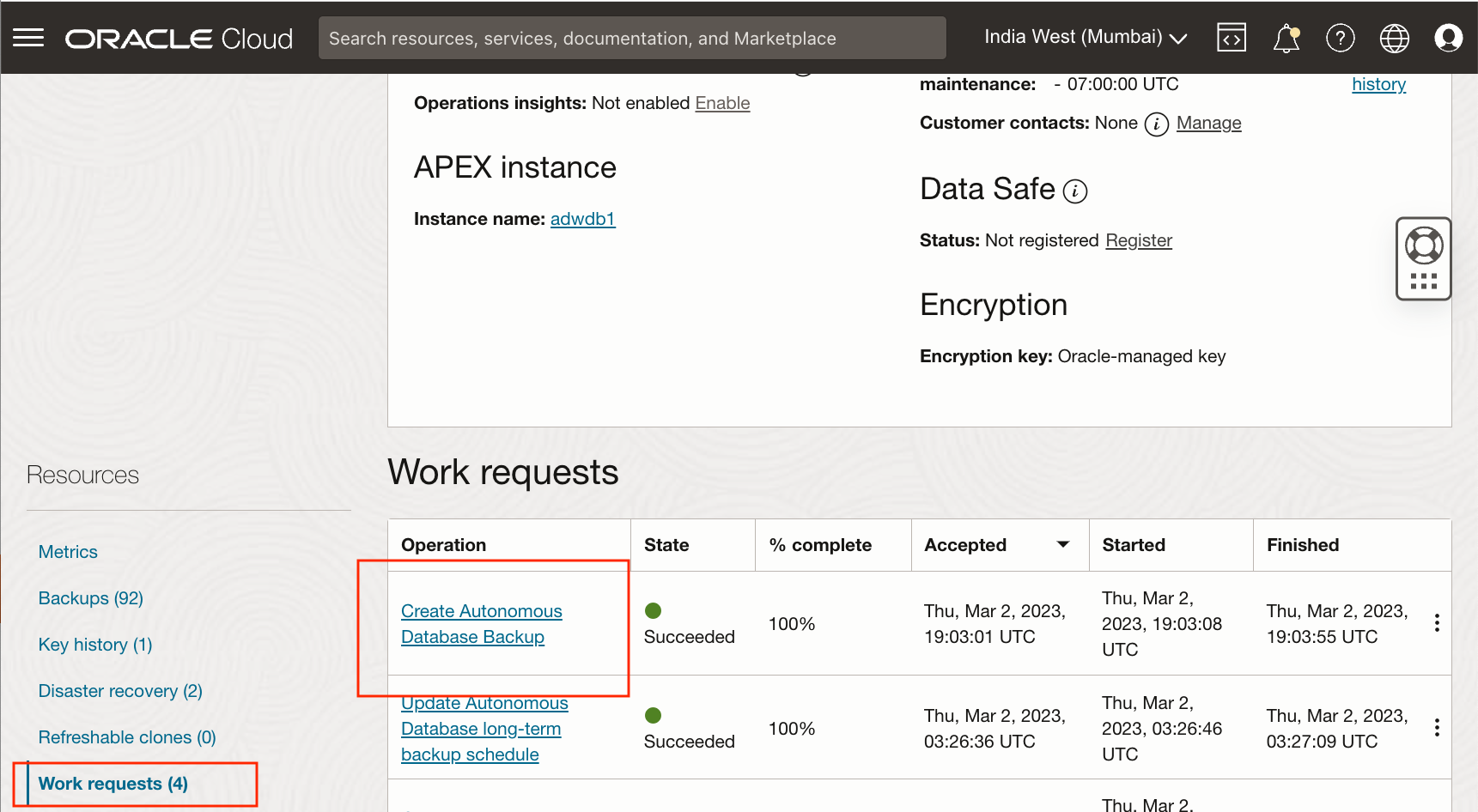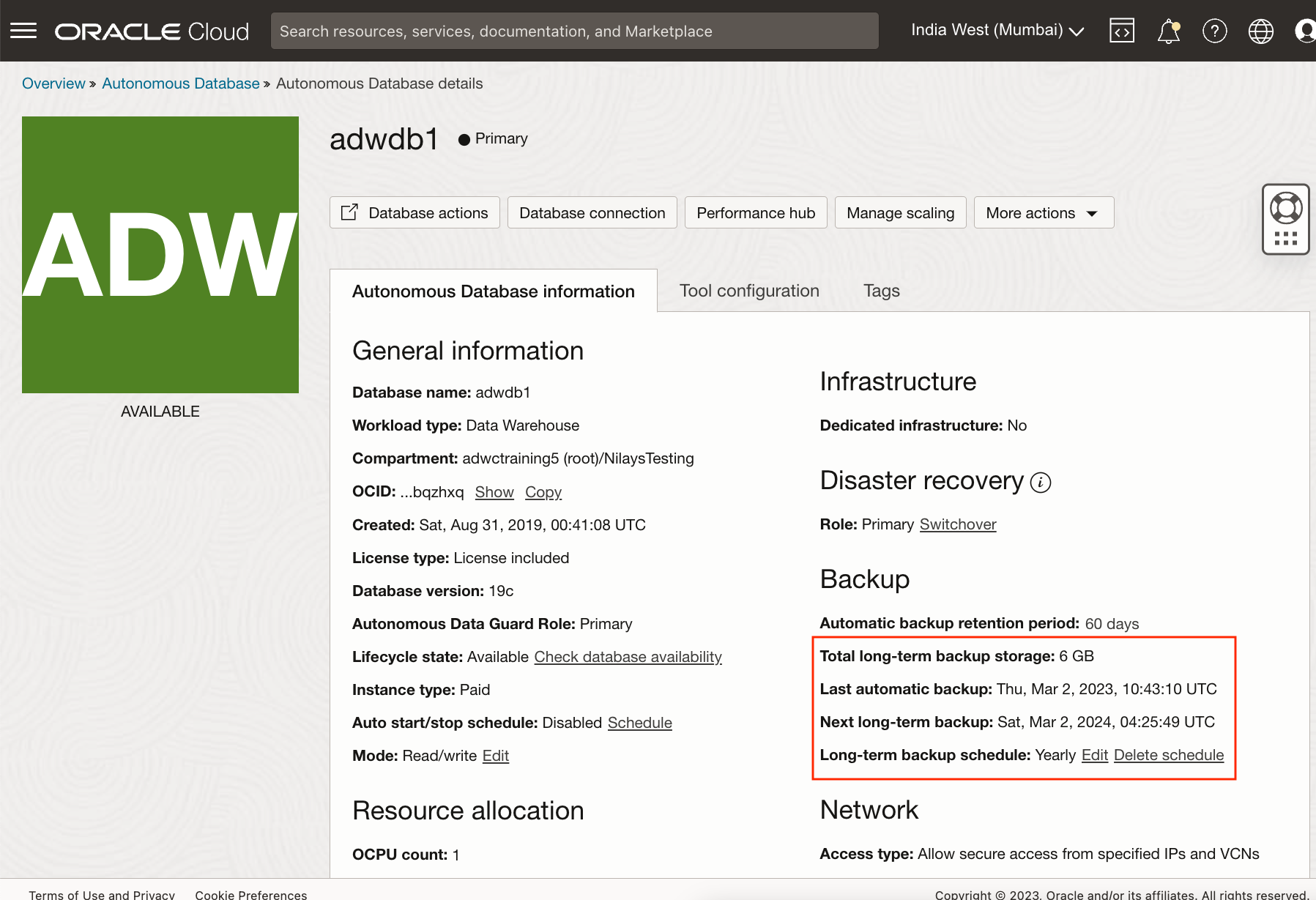Data is one of the most important assets of any organization today. Whether you’re a small business or a large enterprise, your data is critical to your success. In turn, data corruption or data loss that may be caused by disasters, hardware failures, human error or even malicious attacks can have a major impact. It is crucial to have an effective backup and recovery strategy in place. Autonomous Database (ADB-S) provides some of the best and most user-friendly backup and disaster recovery options, made reliable by being fully managed by Oracle automation.

In today’s world, regulations, audits, and compliance requirements often demand long-term retention of data. For instance, in the financial or healthcare sector, you may have to keep transactional and patient data for several years, if not decades. It is essential to have a database backup plan that covers both short-term and long-term retention.
Why do users need long-term backups of their databases?
-
Compliance and regulatory requirements: Many industries have regulatory requirements that mandate long-term data retention. For example, the healthcare industry often must retain patient records for a minimum of seven years, and the financial industry often needs to retain financial records for at least six years.
-
Legal and contractual obligations: Legal and contractual obligations may require long-term data retention. For instance, you may need to keep records for a specific period to comply with a contract or litigation.
-
Historical analysis: Historical data can be valuable for trend analysis, forecasting, and decision-making. By keeping long-term backups, you can access past data and compare it with current data to gain insights into long-term trends.
-
Business continuity: Long-term backups can also support business continuity by providing a way to recover from accidental deletion, data corruption, or other types of data loss. This can help minimize downtime and ensure that business operations can continue with minimal disruption.
As is our ethos on Autonomous DB, you are not expected to manage any long-term backup files yourself; the process of backing up is completely automated and managed by Oracle!
How to create and manage long-term backups in Autonomous Database
- Scroll down on your database console and select Backups under your database’s Resources section. You will now see a new option to Create Long-term Backup on ADB-S.

- As mentioned above, backups on Autonomous Database are completely automated. You will provide:
- When you would like a long-term backup to be taken (Immediately, at a scheduled time in the future, or repeatedly at your preferred cadence)
- How long you would like us to keep a long-term backup for you (ie. the backup retention period). While your existing automatic backups have a backup retention period of 60 days, long-term backups can be retained starting from 90 days all the way upto 10 years.
You may also automate long-term backups at your own, personalized cadence by calling long-term backup CLI APIs in your scripts or via Terraform.

- Once you hit create, we kick off an asynchronous job to create a long-term backup for you in the background, so your database is not held up waiting for the backup to complete. You can track this long-term backup and other lifecycle management (LCM) operations triggered on your database under the Work Requests tab.

- When your long-term backup is available, you will see it in your list of backups. Each long-term backup is a standalone backup that can be managed indivudally. You may edit the retention period of a long-term backup, delete it if you no longer need it, or clone from the backup when you need an instantiated database copy from that long-term backup.
It is good practice to test your long-term backup after creating them by cloning from it, to ensure your backed up data is as required.

- Lastly, you may view the details of any scheduled long-term backups and can edit a schedule from your database console. In addition to any upcoming, scheduled long-term backups you may have set, you may create a long-term backup immediately by repeating from step (1). Notice on the console we also present the size of backups you are paying for – While 60 day automatic backups are included with OCPU-based databases, long-term backups will be billed additionally at your database storage rate.

In conclusion, keeping long-term backups in a database can be important for compliance, legal, historical, or as part of your disaster recovery strategy. It is recommended that to implement a successful long-term backup plan for your mission-critical databases, you define the appropriate retention period and backup frequency as per your business’ compliance needs, and test your backups regularly. By doing so, you can ensure that your data is safe and accessible in the long term. Oracle Autonomous Database has further simplified the backup and recovery process now by automatically taking and managing full backups and providing point-in-time recovery for upto 10 years.
For any other details about ADB-S or long-term backups, refer to the Autonomous Database documentation and the API reference.
Like what I write? Follow me on the Twitter!
